The production of richly illuminated manuscripts continued well after the invention of the printing press. A good example of their value for research in cultural history, in particular the history of portraits1 , is provided by the sumptuous manuscript of Petrarch’s poems in Italian (4648 Bd. Ms 24+) produced in Florence around 1465-70 and acquired by Daniel Willard Fiske (1831-1904) for the Cornell University Library at the end of the 19th century. In addition to abundantly decorated medallions and borders with vegetation, animals, “lace”, and putti, the volume contains two initials ornamented with remarkable portraits of the poet, on folios 2r and 41r.
The first initial [ills. 1 and 2 DETAIL] contains an allegorical portrait showing Petrarch resting his head on his hand and dreaming and/or sighing while Time retreats on crutches, an illustration of the beginning of the first Triumph, TRIUMPHUS CUPIDINIS:
Nel tempo che rinnova i miei sospiri
per la dolce memoria di quel giorno
che fu principio a sì lunghi martiri…
[The time when my sighing is renewed
Had come, stirring the memory of that day
Whereon my love and suffering began…]
As Maria Ruvoldt points out, many illuminated manuscripts of Petrarch (mostly for the Trionfi) show the poet asleep in his study or (as is the case here) in a landscape, “giving visual form to the imagery of the poem. The anonymous author of the Songe du Vergier, a popular medieval French text, is likewise depicted as a dreamer, asleep in the garden of his dream-text.” 2 Dreams were very important in Petrarch’s life. A true “born-again ancient in Christian times” (Aldo Bernardo), he was very familiar with the Greek and Roman tradition that considered visions in dreams as the main source of the poetic inspiration. He gave this tradition a gallant turn, drawing on Virgil’s famous line, “Credimus? An qui amant ipsi sibi somnia fingunt?” (Must we believe them? Or do lovers make up their dreams for themselves?): the dream seemingly allows the lover to abolish distance in space and time, and to “love” the other, notwithstanding physical separation and even death.
The position of the poet (sitting and resting his head on his hand) is found in other portraits, for example in the “Codice Trivulziano”, a copy of the Rime and the Trionfi of the 1470s (Biblioteca Trivulziana, Milan, codex 905) [ill. 3]
Indeed, this position became so popular that it would be used in retrospect to portray ancient authors, for instance Lactantius Firmianus (c. 250-325), “whose Divinae Institutiones [were] frequently presented as a bridge between the classical tradition [especially Cicero] and the later Christian thought”.3 Petrarch quoted him, especially on otium, the idea of withdrawing from one’s daily business (negotium) or affairs in order to engage in intellectual self-development. In the 1509 Paris edition of his works by Jehan Petit, Lactantius is shown dreaming and/or thinking (and sighing?) in his study, like Petrarch [ill. 4].
It is worth noting, however, that in the Cornell manuscript, the dreamer finds himself, not in a study surrounded by books, but alone in a landscape. Petrarch’s lonely character and sensitivity to nature are well-known. Indeed, like many poets since Antiquity , he occasionally had to defend himself against accusations of aloofness and associability. Petrarch eventually left his retreat in Vaucluse for the courts and the cities, but he spent his last years in religious contemplation in the Euganean Hills near Padua, Italy. One may argue that the Renaissance was more acceptant of individualism, and saw time as a threat to individual achievements.
Precisely, the second “character” in the image is an allegory of Time as a very old man with wings and crutches. This iconography seems to be posterior to Petrarch: according to Simona Cohen, it is first attested in the early 1440s.5 After that, it becomes quite common in illuminations, prints, but also on wedding chests and of course on tarot cards. For example, one finds the image of an old bearded man on crutches in a c. 1450 illustration for Petrarch’s “Triumph of Time” by the so-called “Master of the Riccardian Virgil” (Riccardiana Library Ms. 1129, f. 42), and later in a 1482-4 Florentine printed book, which offers striking similarities with the Cornell manuscript when it comes to the image of “Time” [ill. 5]. This is another instance of continuity between manuscript production and print.
The second initial [ills. 6 and 7 DETAIL] is an institutional portrait showing Petrarch as the poet laureate, with the crown of laurels and the red/purple robe of Julius Caesar (who himself wanted to emulate Romulus) and/or the canons of Padua, in which he was thought to have been buried — whereas in fact Petrarch chose the humble black tunic to appear in front of his God.
Let us remember what Jacob Burckhardt (1818-97) wrote about the cult of artists as one of the distinctive features of the Renaissance: “It was a point of honor for the different cities to possess the bones of their celebrities… Dante, Petrarch, Boccaccio, or the jurist Zanobi Della Strada, had magnificent tombs erected to them… Petrarch’s likeness found its way in every part of Italy, and it became the classic instance of public fame in the fourteenth century.” One thinks of the charming c. 1400 Venetian portrait of Petrarch at his lectern. Here as well he appears in the middle of a big initial “V[oi]”, dressed in red and holding a book, but without laurels — in fol. 1 of Petrarch’s Canzoniere, British Library King’s 321. [ill. 8]
Burckhardt goes on, “Later, [the portrait of Petrarch] appeared in a kind of triumvirate with Dante and Boccaccio, or else with Giotto and Dante… In the fifteenth century, as art perfected its power to individualize, images of this kind became even more prevalent than before… What counted was not the pursuit of a genuine portrait likeness, but the creation of characters and figures for those singled out by fame [as] in the famous frescoes by Andrea del Castagno [for the Villa Pandolfini near Florence, around 1448-51].”6 [ill. 9: the fresco painting, kept at the Uffizi nowadays, showing Petrarch wearing the red robe and hoodie]
The two portraits, the allegorical one and the institutional one, work together. Logically, the portrait with the written book and the laurels (the reward for the book) come second. The crown brings to mind the famous line in Canzone 23.167-8, ne per nova figura il primo alloro / seppi lassar = Nor could I leave the first laurel for a new figure, which has been elegantly interpreted by Gur Zak: “The final note of the poem renews with full force the hope of overcoming the flux of time through the writing of poetry of desire: his longing for the laurel, the poet stresses, is never-changing, [he always returns to] the first laurel, a metaphor of his desire of triumph over the passing of time”.7 Poetry transcends time, and gives access to eternity.
The last notable feature of the Cornell manuscript is the presence of the arms of the first owner, a member of the Scanderbeg family of landowners, generals, and patrons of the arts. The most famous member of this family, Gjergj Kastrioti Skënderbeu or Scanderbeg/k (1405-68) [ill. 10: his portrait, also at the Uffizi] was an Albanian nobleman born in in the Shëgjerth neighborhood of Sinë, a village in Dibra (Macedonia). Sultan Murad II took him hostage when he was seven, and he was raised as a Muslim and then forced to serve in the Ottoman army during the next twenty years of his life. In 1443, he deserted the Ottomans during the Battle of Niš. He subsequently fought against the Ottoman Empire for twenty-five years, along with Venice and her allies. He is considered a national hero by the Albanians.
We must think of the Mediterranean as a complex, both conflicted and multicultural area: after all, despite the crusades and territorial disputes, the refined Sultan Mehmet II (1451-81) had his portrait made by the Venetian painter Gentile Bellini, and collected Greek and Byzantine manuscripts. This doesn’t mean, however, that there wasn’t already an “imagined community”8 called Europe and defined by common references, manners, and values.9 In that sense, if “Petrarchism offered a literary model for emergently national vernaculars soon to be codified throughout Europe”10 , it was also a marker of cultural identity in a supra-national way. By commissioning a sumptuous manuscript of Petrarch’s poems in the vernacular, the Italianized Skanderbegs were making a statement: they decidedly belonged to the European, Greek-Latin, and Roman Christian culture. By joining the community of readers and collectors of Petrarch11 , and by associating their name with the Florentine and European poet over several generations12 , the family was also acquiring a piece of eternity.
___________________
1 One of the very first “realistic portraits immortalizing loved ones” we know of was painted by Simone Martini for Petrarch to capture the beauty and spirit of the poet’s beloved Muse Laura.
2 The Italian Renaissance Imagery of Inspiration: Metaphors of Sex, Sleep, and Dream, Cambridge University Press, 2004, p. 17
3 Alexander Lee, Petrarch and St. Augustine: Classical Scholarship, Christian Theology and the Origins of the Renaissance in Italy, Brill, 2002, p. 141.
4 One thinks here of the rhetoric deployed by one of the lawyers in Tacitus’s Dialogue of the Orators: “reliquenda conversation amicorum et jucunditas Urbis, deserenda cetera official utque ipsi dicunt, in nemora et lucos, id est in solitudinem sededendum est” (Dialogus de oratoribus, IX)
5 Simona Cohen, “The Early Renaissance Personification of Time and Changing Concepts of Temporality” (Renaissance Studies vol. 14 no. 3 (2000) pp. 301-328).
6 Italian Renaissance Painting According to Genres [1885-1993], reed. Getty Publications, 2005, p. 193. See also the chapter “The Modern Idea of Fame” of Burckhardt’s monumental Civilization of the Renaissance in Italy (1860).
7 Petrarch’s Humanism and the Care of the Self, Cambridge University Press, 2010, p. 70.
8 Benedict Anderson, Imagined Communities: Reflections on the Origins and Spread of Nationalism, London and New York: Verso, 1983
9 See Jeanne Bem and André Guyaux (eds.), Ernst Robert Curtius et l’idée d’Europe, Champion, Paris 1995.
10 William J. Kennedy, The Site of Petrarchism: Early Modern National Sentiment in Italy, France, and England, The Johns Hopkins University Press, 2003, p. 262.
11 In the second initial, the poet emerges from the V of “Voi”: a poet is inseparable for the reception of his work.
12 Irene Skanderbeg, the wife of Gjergj Kastrioti’s son Ferrante, co-designed an emblem and a poetic motto inspired by Petrarch’s Rime, reproduced by Ruscelli in 1584.
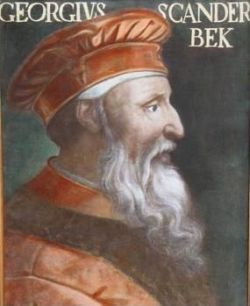
![[ill. 1]](https://rarebooksdigest.com/wp-content/uploads/2015/11/Petrrach-Ill1-e1446692002101.jpg)
![[ill. 2]](https://rarebooksdigest.com/wp-content/uploads/2015/11/Petrarch-Ill2-e1446691977921.jpg)
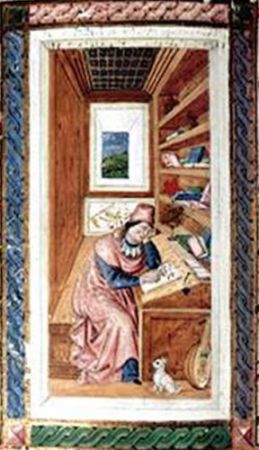
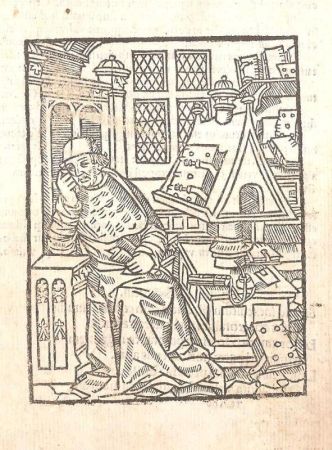
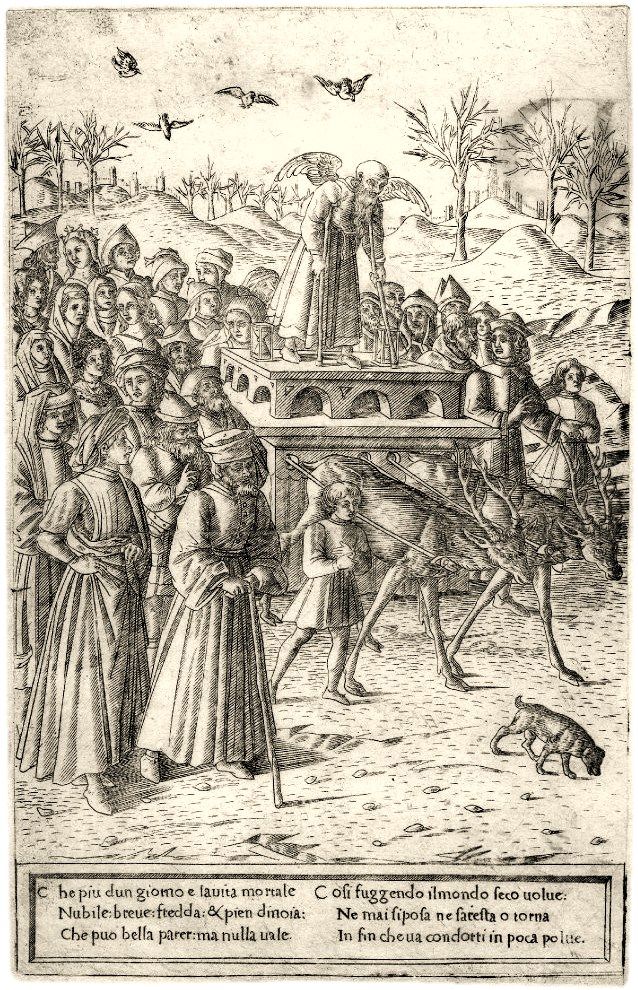
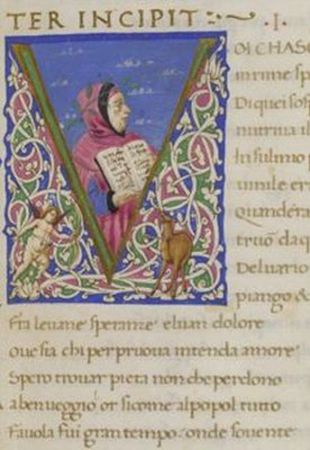
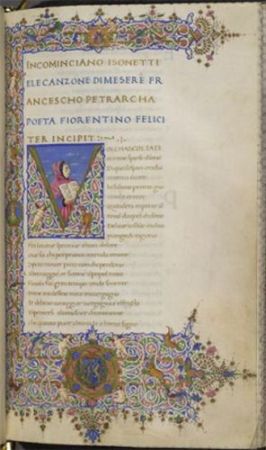
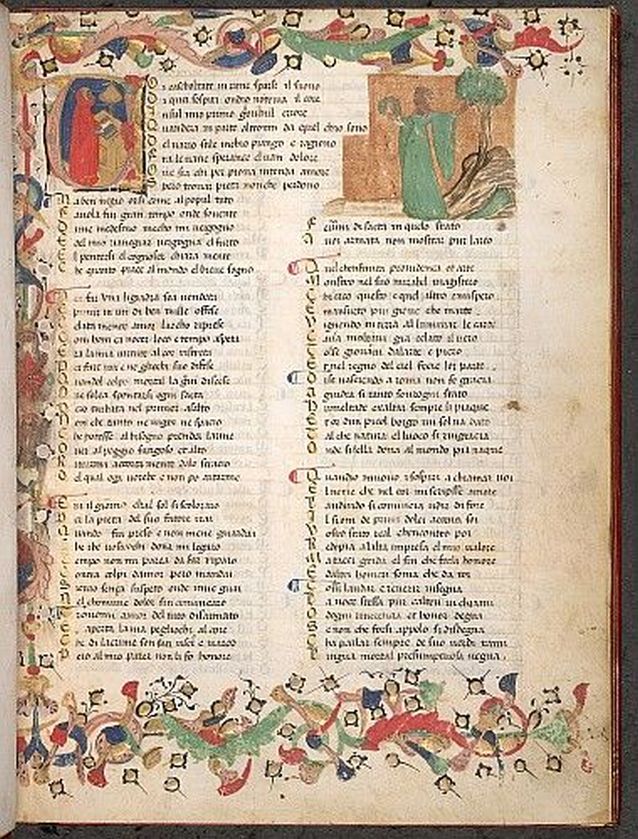
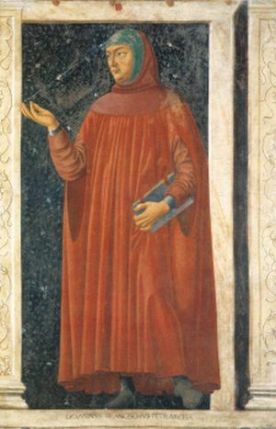
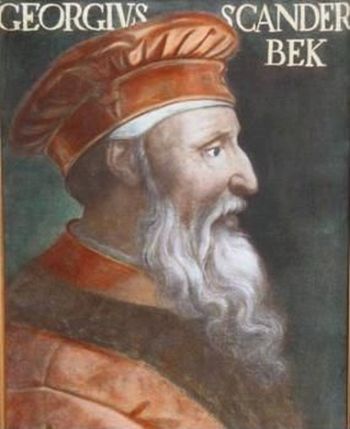

{ 0 comments… add one now }
{ 1 trackback }